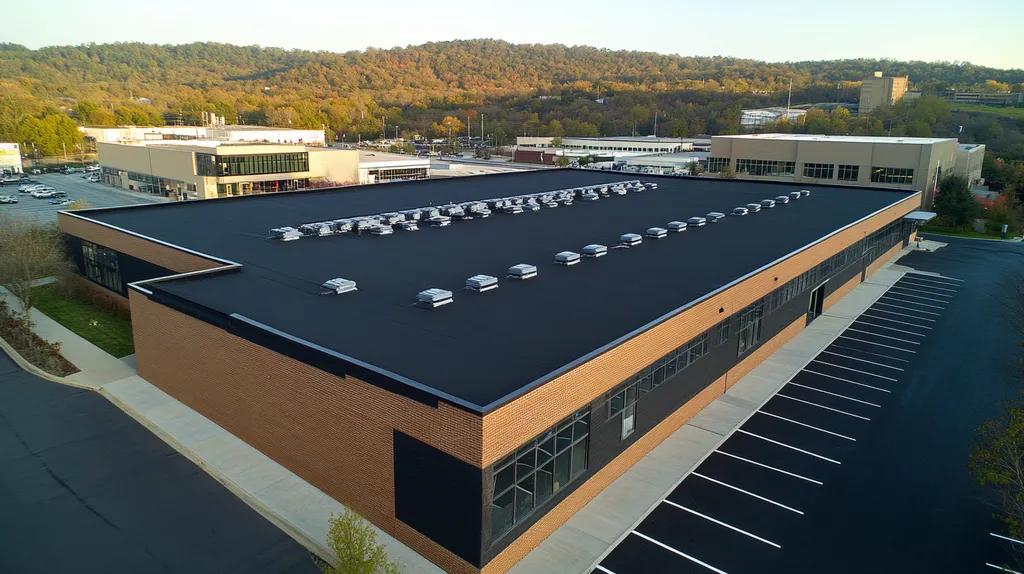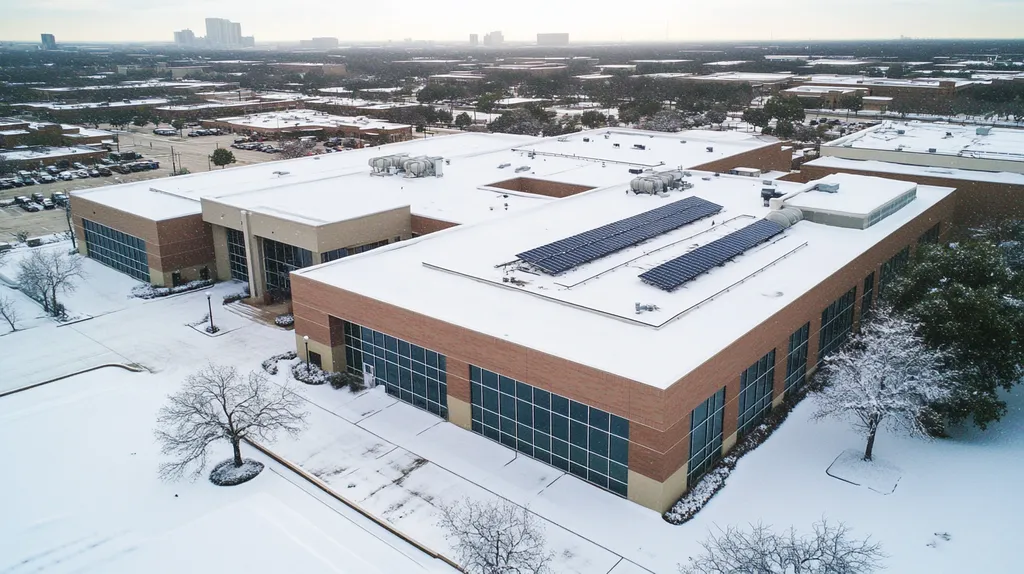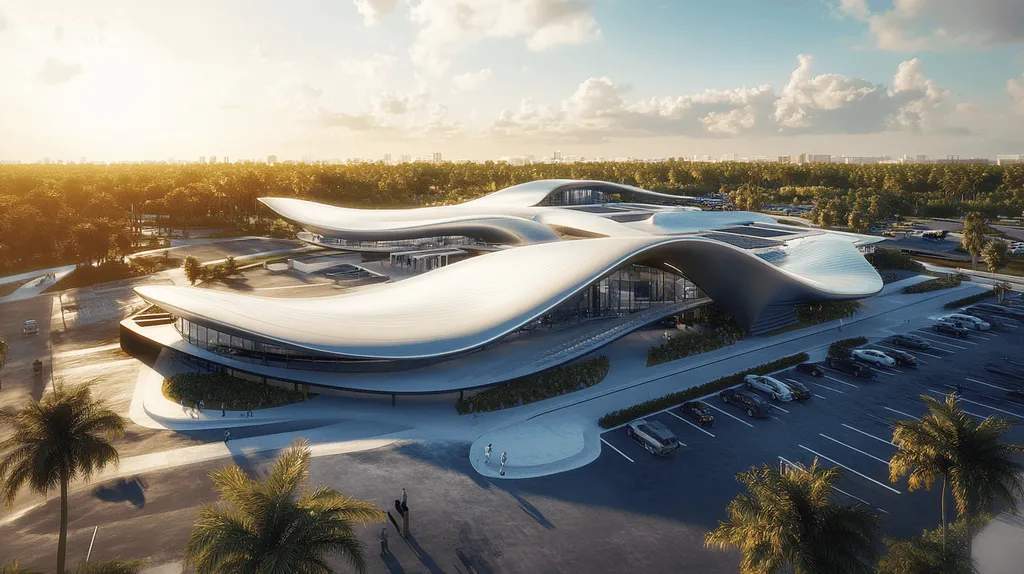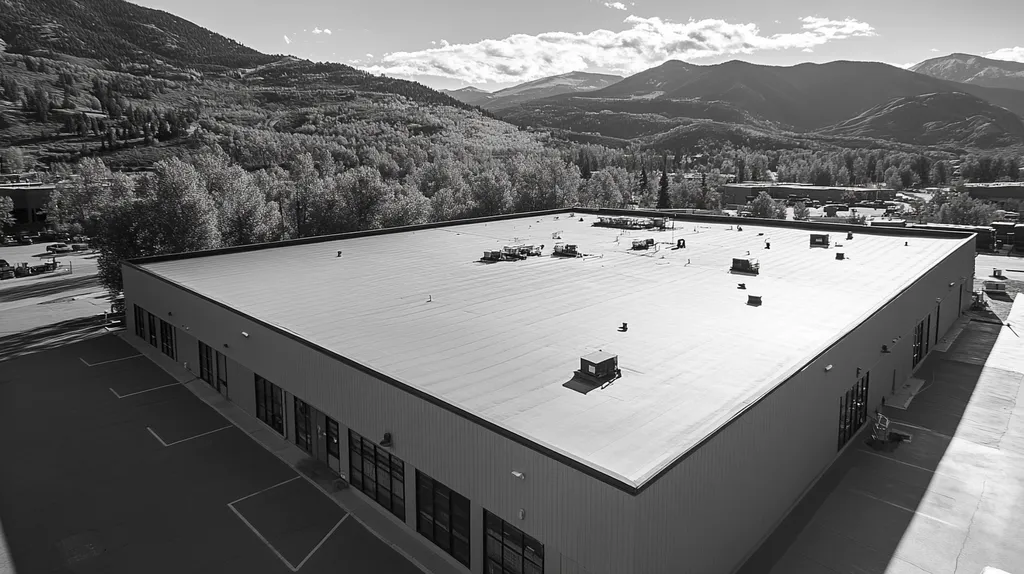Welcome to today’s Battle Royale featuring two roofing heavyweights: “Infrared Thermography” in the east corner versus “Visual Inspection” in the west!
Tonight’s showdown pits these contenders against each other across six punishing rounds designed to test every aspect of their performance for Commercial Roof Condition Assessment.
At stake? Millions in potential costs, decades of building protection, and the critical performance demands of modern commercial and industrial facilities.
Our professional judging panel will evaluate each round on technical merit, real-world performance, and value delivery. After all six rounds, we’ll declare our ultimate champion.
Ladies and gentlemen, facility managers and building owners… it’s time to rumble!
ROUND 1: INITIAL COSTS & INSTALLATION
When it comes to commercial roof assessments, choosing the right inspection method can mean the difference between catching problems early or facing catastrophic failures. With the average commercial roof replacement costing upwards of $250,000, facility managers must carefully weigh the investment in assessment technologies against potential risks.
Each inspection method brings distinct advantages and limitations that directly impact project costs, timelines, and effectiveness. Understanding these factors is crucial for making informed decisions that protect both the building and the bottom line.
Material Expenses
The initial investment in infrared thermography equipment requires significant capital, with professional-grade thermal cameras ranging from $8,000 to $15,000. Additional software and calibration tools can push total equipment costs above $20,000.
Visual inspection tools are considerably more affordable, typically requiring only basic safety equipment, measuring devices, and documentation tools. This minimal investment makes visual inspections accessible to organizations of all sizes.
Each type of roof inspection demands different tools and approaches. For example, while general contractors might focus on checking fasteners during periodic construction inspections, thermal imaging specialists require sophisticated equipment to detect subsurface moisture. (source: Procore)
ADVANTAGE: Visual Inspection
Installation Complexity
Infrared thermography requires specialized training and certification to properly operate equipment and interpret thermal readings. Technicians must understand building physics, heat transfer principles, and environmental factors that affect readings.
Visual inspections can be performed by trained maintenance staff or roofing professionals with basic knowledge of roofing systems. The straightforward nature of visual assessments allows for immediate implementation without extensive training.
However, the simplicity of visual inspections can lead to overlooked problems, particularly in areas not easily accessible or visible to the naked eye.
ADVANTAGE: Visual Inspection
Project Timeline
Infrared scans must be conducted under specific environmental conditions to ensure accurate readings. Optimal conditions typically occur during evening hours after sunset, requiring careful scheduling and potential overtime costs.
Visual inspections offer greater flexibility in scheduling and can be performed during regular business hours. This convenience allows for faster project completion and minimal disruption to building operations.
Despite the scheduling advantages of visual inspections, the comprehensive nature of infrared scanning often provides more thorough results that can prevent future emergency repairs.
ADVANTAGE: Visual Inspection
ROUND 1 WINNER: VISUAL INSPECTION
ROUND 2: DURABILITY & LIFESPAN
The stakes for accurate roof assessment have never been higher. With 20% of commercial roofs currently in poor or severe condition, property owners face increasing pressure to detect and address issues before they become catastrophic failures. Modern assessment methods can mean the difference between a roof lasting its full 30-year lifespan or requiring premature replacement.
Advanced Detection Capabilities
Advances in aerial imagery, machine learning, and AI now provide unprecedented accuracy in determining both roof age and condition. These technologies can quickly identify material degradation, damaged areas, and missing components across vast roof surfaces.
Infrared thermography excels at detecting hidden moisture intrusion and insulation problems that compromise roof integrity. This technology can identify potential failure points long before they manifest as visible damage.
Visual inspections, while thorough for surface-level issues, cannot detect subsurface problems. This limitation means many serious issues go unnoticed until they cause visible damage. (source: CAPE Analytics)
ADVANTAGE: Infrared Thermography
Assessment Accuracy
Infrared scanning provides quantifiable data about roof conditions, removing subjectivity from the assessment process. The technology can precisely measure temperature variations that indicate moisture penetration or insulation failures.
This scientific approach allows property owners to track deterioration over time and make data-driven decisions about maintenance and replacement. The detailed readings help prioritize repairs based on objective severity rather than visual estimates.
Visual inspections rely heavily on the inspector’s experience and judgment, introducing potential inconsistencies. Without technological verification, assessments may vary significantly between inspectors.
ADVANTAGE: Infrared Thermography
Long-term Performance Monitoring
Infrared assessments create baseline thermal profiles that enable systematic tracking of roof performance over time. These records help identify developing issues before they compromise roof integrity.
Regular thermal scans can document the progression of existing problems and verify repair effectiveness. This monitoring capability supports proactive maintenance strategies that extend roof lifespan.
Visual inspections provide limited ability to track subtle changes in roof condition between assessments. Without quantifiable data, tracking gradual deterioration becomes challenging.
ADVANTAGE: Infrared Thermography
ROUND 2 WINNER: Infrared Thermography
ROUND 3: PERFORMANCE FACTORS
When evaluating commercial roof assessment methods, performance factors can mean the difference between catching a $5,000 repair early or facing a $500,000 catastrophic failure. Modern roofing systems are increasingly complex, with multiple layers and components that can mask developing problems. Understanding how different inspection approaches perform in real-world conditions is crucial for protecting these valuable assets.
Accuracy of Detection
Infrared thermography excels in identifying concealed issues, detecting temperature variations as small as 0.2°C that indicate moisture infiltration or insulation breakdown. This precision allows facility managers to pinpoint problems before they become visible, enabling targeted repairs that save both time and money.
The technology’s ability to scan large areas quickly while providing detailed subsurface information makes it particularly valuable for complex roofing systems. These scans create precise thermal maps that clearly distinguish between healthy and compromised areas.
Visual inspections, while thorough for surface-level assessment, cannot detect issues hidden within or beneath the roofing membrane. Even experienced inspectors may miss early signs of moisture intrusion or insulation deterioration that could lead to significant damage.
ADVANTAGE: Infrared Thermography
Reporting and Documentation
The digital nature of infrared assessments generates comprehensive reports with thermal imaging maps, temperature readings, and precise problem location documentation. These detailed records create an objective baseline for tracking roof condition over time.
Modern infrared systems can overlay thermal data with visual imagery, providing clear evidence of problems and their extent. This documentation helps facility managers make informed decisions about repair priorities and budget allocation.
Visual inspection reports rely heavily on written descriptions and standard photographs, which may not fully capture the scope or severity of roofing issues. The subjective nature of these assessments can lead to inconsistent documentation and unclear repair recommendations.
ADVANTAGE: Infrared Thermography
Long-Term Value
Infrared assessments provide quantifiable data that enables predictive maintenance strategies. By identifying developing issues early, facility managers can prevent minor problems from escalating into major repairs.
The technology’s ability to track changes over time helps optimize maintenance schedules and extend roof life. Regular thermal scanning can verify repair effectiveness and monitor known problem areas.
While visual inspections cost less initially, their limited detection capabilities often result in reactive maintenance approaches. This can lead to higher long-term costs through emergency repairs and shortened roof lifespan.
ADVANTAGE: Infrared Thermography
ROUND 3 WINNER: Infrared Thermography
ROUND 4: MAINTENANCE REQUIREMENTS
Effective maintenance can be the difference between a roof lasting 30 years or failing prematurely at 15. With commercial roof replacements averaging $400,000-$800,000, choosing the right assessment method directly impacts maintenance effectiveness and long-term costs. Property owners must evaluate how different inspection approaches support their maintenance strategies.
Impact on Long-Term Costs
A comprehensive roof evaluation system is essential for controlling long-term maintenance expenses and protecting building assets. Regular assessments help identify issues early, when repairs are less expensive and less disruptive to operations.
Infrared thermography detects moisture intrusion and insulation failures before they cause visible damage. This early warning capability allows facility managers to address problems when they’re small and contained, significantly reducing repair costs.
Visual inspections often miss developing issues until water penetration becomes evident. By then, repairs typically cost 3-4 times more and may require extensive material replacement.
ADVANTAGE: Infrared Thermography
Frequency of Required Inspections
A commercial roof condition assessment provides strategic guidance for long-term roof management through comprehensive evaluation of materials, structural integrity, drainage, and insulation systems. This systematic approach helps identify vulnerabilities before they become critical issues. (source: ABSI)
Infrared scans can be performed quarterly or semi-annually, providing consistent data points to track roof condition. The technology’s ability to detect subtle changes means fewer intensive inspections are needed.
Visual inspections typically require monthly or bi-monthly checks to maintain adequate oversight. This higher frequency increases labor costs and creates more opportunities for oversight errors.
ADVANTAGE: Infrared Thermography
Ease of Maintenance Planning
Effective maintenance planning requires reliable data about roof conditions and clear priorities for repairs. The assessment method directly impacts how easily facility managers can develop and execute maintenance strategies.
Infrared assessments generate detailed thermal maps and moisture concentration data that clearly show problem areas. This objective information helps maintenance teams prioritize repairs and allocate resources efficiently.
Visual inspections produce more subjective results that can vary between inspectors. Without quantifiable data, maintenance planning becomes more challenging and less strategic.
ADVANTAGE: Infrared Thermography
ROUND 4 WINNER: INFRARED THERMOGRAPHY
ROUND 5: SUSTAINABILITY CREDENTIALS
With commercial buildings accounting for 40% of U.S. energy consumption, sustainable roofing practices have never been more critical. Modern roof assessments must balance environmental impact with performance, considering factors like energy efficiency, material longevity, and waste reduction. As climate concerns intensify, choosing the right inspection method can significantly influence a building’s environmental footprint.
Energy Efficiency Insights
Proper roof assessment directly impacts building energy performance. Even small insulation gaps or moisture infiltration can increase heating and cooling costs by 15-20%, making accurate detection crucial for sustainability goals.
Infrared thermography precisely maps temperature variations across roof surfaces, revealing insulation failures and thermal bridges that waste energy. This technology enables targeted repairs that optimize energy efficiency and reduce carbon emissions.
Visual inspections cannot detect subtle temperature differences or identify areas of heat loss. Without thermal imaging, energy-wasting defects often go unnoticed until they significantly impact utility costs.
ADVANTAGE: Infrared Thermography
Material Lifecycle Impact
A comprehensive roof condition assessment includes detailed analysis of materials, structural integrity, drainage, and insulation systems. This systematic evaluation helps identify vulnerabilities before they compromise the roof’s sustainability performance. (source: ABSI)
Infrared scanning detects moisture penetration and material degradation early, extending roof life and reducing waste. This preventive approach helps maintain material integrity and delays replacement needs.
Visual assessments often miss early signs of material failure, leading to premature replacement and increased environmental impact. Without advanced detection capabilities, sustainable lifecycle management becomes challenging.
ADVANTAGE: Infrared Thermography
Environmental Protection Measures
Protecting the environment requires proactive identification of potential contaminants and water damage. Roof leaks can lead to mold growth and indoor air quality issues that affect both building occupants and the environment.
Infrared technology quickly identifies water infiltration before it can cause widespread damage or contamination. This early detection prevents the need for extensive repairs that generate construction waste.
Visual inspections typically discover water damage after it has already impacted building materials and potentially released harmful substances. This reactive approach results in more materials ending up in landfills.
ADVANTAGE: Infrared Thermography
ROUND 5 WINNER: Infrared Thermography
ROUND 6: SPECIALIZED APPLICATIONS
As commercial roofing systems become increasingly complex, specialized applications demand more sophisticated assessment approaches. With the average commercial roof containing over 100,000 square feet of surface area and multiple material layers, traditional inspection methods often fall short in critical scenarios. The stakes are particularly high for facilities with specialized requirements or challenging environmental conditions.
Critical Environment Applications
Healthcare facilities, data centers, and clean manufacturing environments require pristine roof conditions to maintain operations. Even minor leaks can compromise sterile environments or damage sensitive equipment, making early detection essential.
Infrared thermography provides non-invasive monitoring that can detect moisture intrusion before it reaches critical areas. The technology’s ability to scan large areas quickly while maintaining strict environmental protocols makes it ideal for sensitive facilities.
Visual inspections pose contamination risks in clean environments and often require facility shutdown for thorough assessment. This disruption can cost thousands in lost productivity and compromise environmental controls.
ADVANTAGE: Infrared Thermography
Multi-Layer System Assessment
A commercial roof condition assessment requires comprehensive evaluation of materials, structural integrity, drainage, and insulation systems across multiple layers. This systematic approach helps identify vulnerabilities before they compromise the entire roofing system. (source: ABSI)
Infrared technology penetrates multiple roof layers to detect hidden issues like delamination or trapped moisture. This capability proves invaluable for complex systems where problems can develop between layers.
Visual inspections cannot effectively evaluate conditions between roof layers. This limitation leaves facility managers blind to developing issues until they cause visible damage.
ADVANTAGE: Infrared Thermography
Historic Building Applications
Historic structures require particularly careful assessment to preserve architectural integrity while ensuring protection. These buildings often feature unique materials and construction methods that demand specialized evaluation approaches.
Infrared scanning provides detailed insights without physical contact, protecting delicate historic materials. The technology can identify moisture intrusion and deterioration without compromising the structure’s historic character.
Visual inspections of historic roofs often require invasive testing that risks damage to irreplaceable materials. Without advanced detection capabilities, preserving these structures while maintaining their protective function becomes increasingly difficult.
ADVANTAGE: Infrared Thermography
ROUND 6 WINNER: INFRARED THERMOGRAPHY
AND THE WINNER IS…
After six grueling rounds of technical combat, we have our undisputed champion! With a dominant 5-1 victory, INFRARED THERMOGRAPHY claims the title of Ultimate Commercial Roof Assessment Champion!
This technical powerhouse dominated the competition through superior detection capabilities, comprehensive documentation, and unmatched performance in specialized applications. Its ability to identify hidden moisture and insulation issues before they become catastrophic failures proved decisive in Rounds 2 through 6.
Visual Inspection, while suffering a technical knockout, remains a valuable contender for initial assessments and routine maintenance checks, particularly when budget constraints or immediate availability are primary concerns. Its Round 1 victory highlighted its accessibility and straightforward implementation.
However, every building tells its own story. Local climate conditions, roof system complexity, and specific facility requirements can all impact assessment effectiveness. Individual properties may face unique challenges that require customized approaches. Property owners and managers should always consult qualified roofing professionals who can evaluate their specific situation and recommend appropriate assessment strategies.
Ladies and gentlemen, in the high-stakes arena of commercial roofing, remember: The true champion isn’t the technology itself, but the wisdom to deploy the right assessment method at the right time for your specific facility’s needs. That’s the kind of strategic thinking that keeps you off the maintenance canvas and in fighting form for decades to come!
FREQUENTLY ASKED QUESTIONS
Q. What are the initial costs for commercial roof inspections?
A. Infrared thermography requires a significant investment in specialized equipment, costing over $20,000. Conversely, visual inspections are more affordable, needing only basic safety tools and documentation. It’s crucial to weigh these costs against the potential savings from identifying roofing issues early.
Q. How do durability and lifespan differ between roofing assessment methods?
A. Infrared thermography effectively detects hidden issues, ensuring roofs can last their intended lifespan. Visual inspections often miss subsurface problems, which can cause critical failures and reduce the roof’s longevity. Utilizing modern methods is key to prolonging roof life.
Q. Which assessment method performs better for detecting underlying roof issues?
A. Infrared thermography excels at identifying concealed damage by detecting subtle temperature differences. This precision allows timely interventions, preventing problems from escalating. Visual inspections lack this capability, making them less reliable for identifying developing issues.
Q. How do different methods affect maintenance requirements for commercial roofs?
A. Infrared assessments are beneficial as they allow for scheduled inspections, decreasing labor costs. They identify issues early on, enabling repairs before they escalate. In contrast, visual inspections may result in increased frequency and costs due to missed developing problems.
Q. What advantages does infrared thermography have for sustainability in roofing?
A. Infrared thermography helps identify thermal inefficiencies and insulation failures, enhancing energy efficiency. By addressing these issues early, properties can lower energy costs and minimize carbon footprint. Visual inspections tend to overlook such details, making them less effective for sustainability.
Q. How does the assessment method affect specialized applications in roofing?
A. For critical environments like hospitals or data centers, infrared thermography is essential as it detects moisture without disruptions. This capability aligns with strict operational standards. Visual inspections risk contamination or downtime, which can be very costly for specialized facilities.
Q. What should I choose for a commercial roof assessment: thermography or visual inspection?
A. The choice depends on your building’s needs, budget, and potential risks. Infrared thermography is more comprehensive and provides detailed insights, while visual inspections are cost-effective for initial assessments. Consider long-term benefits before deciding on an assessment method.











